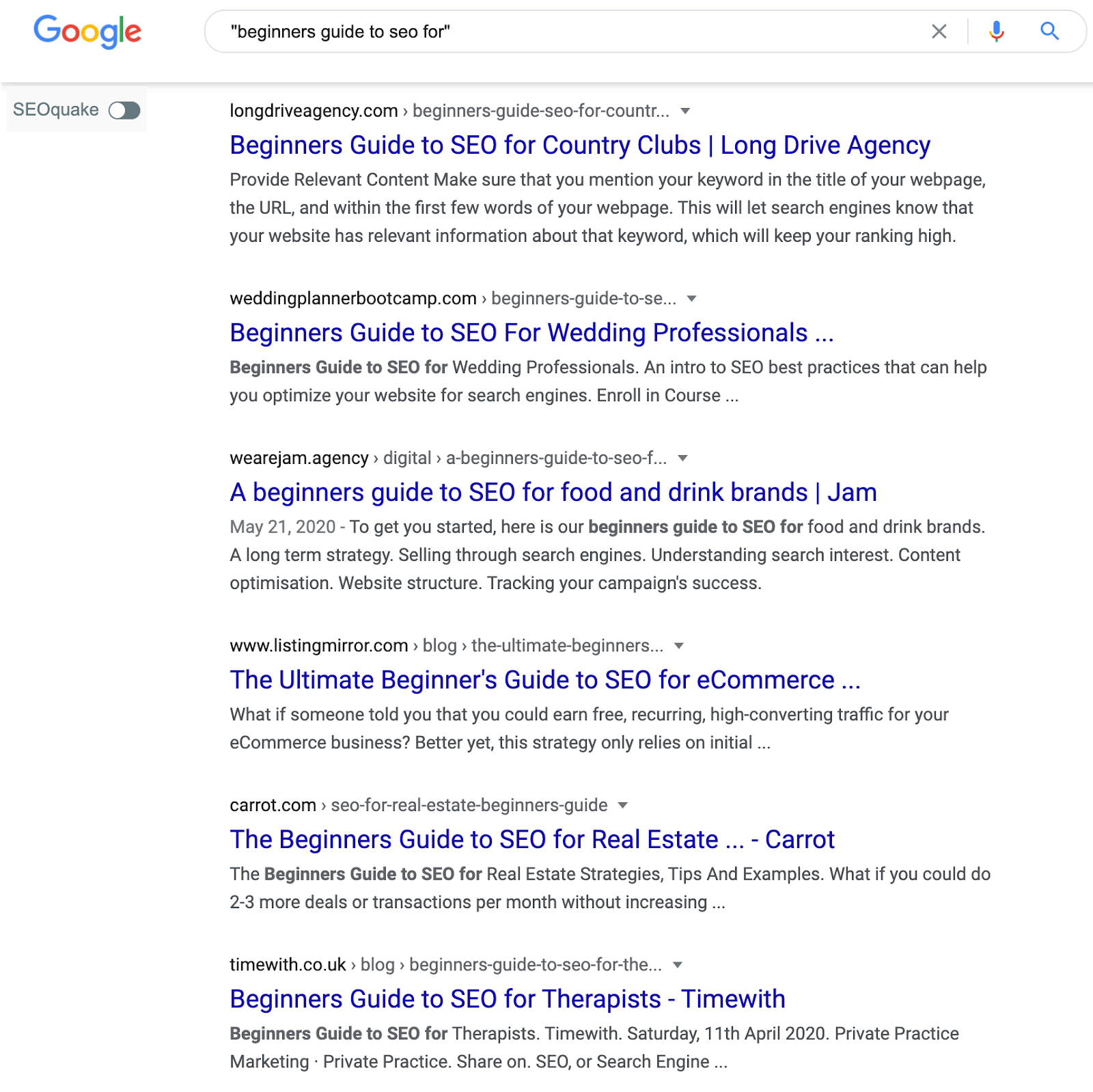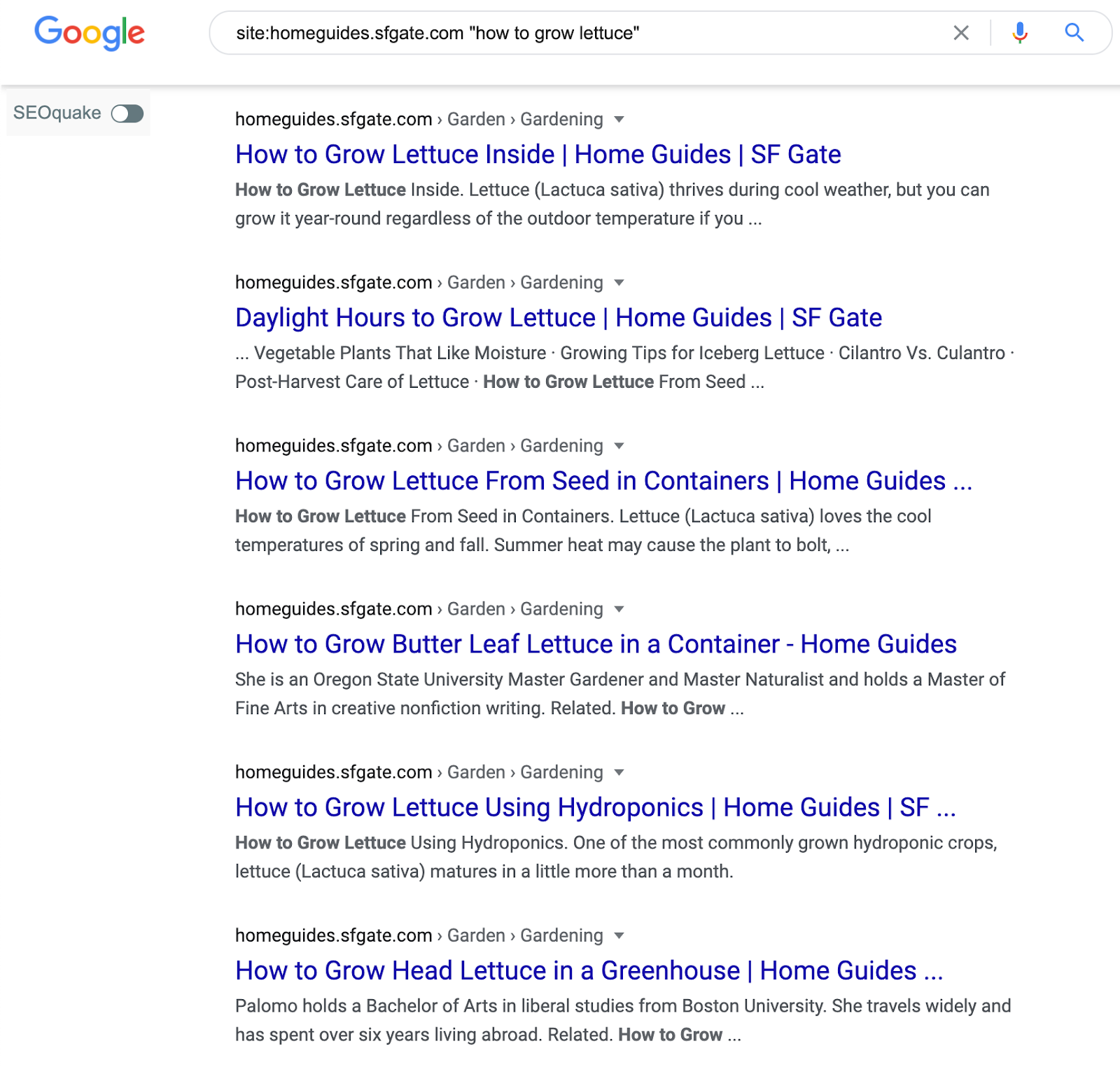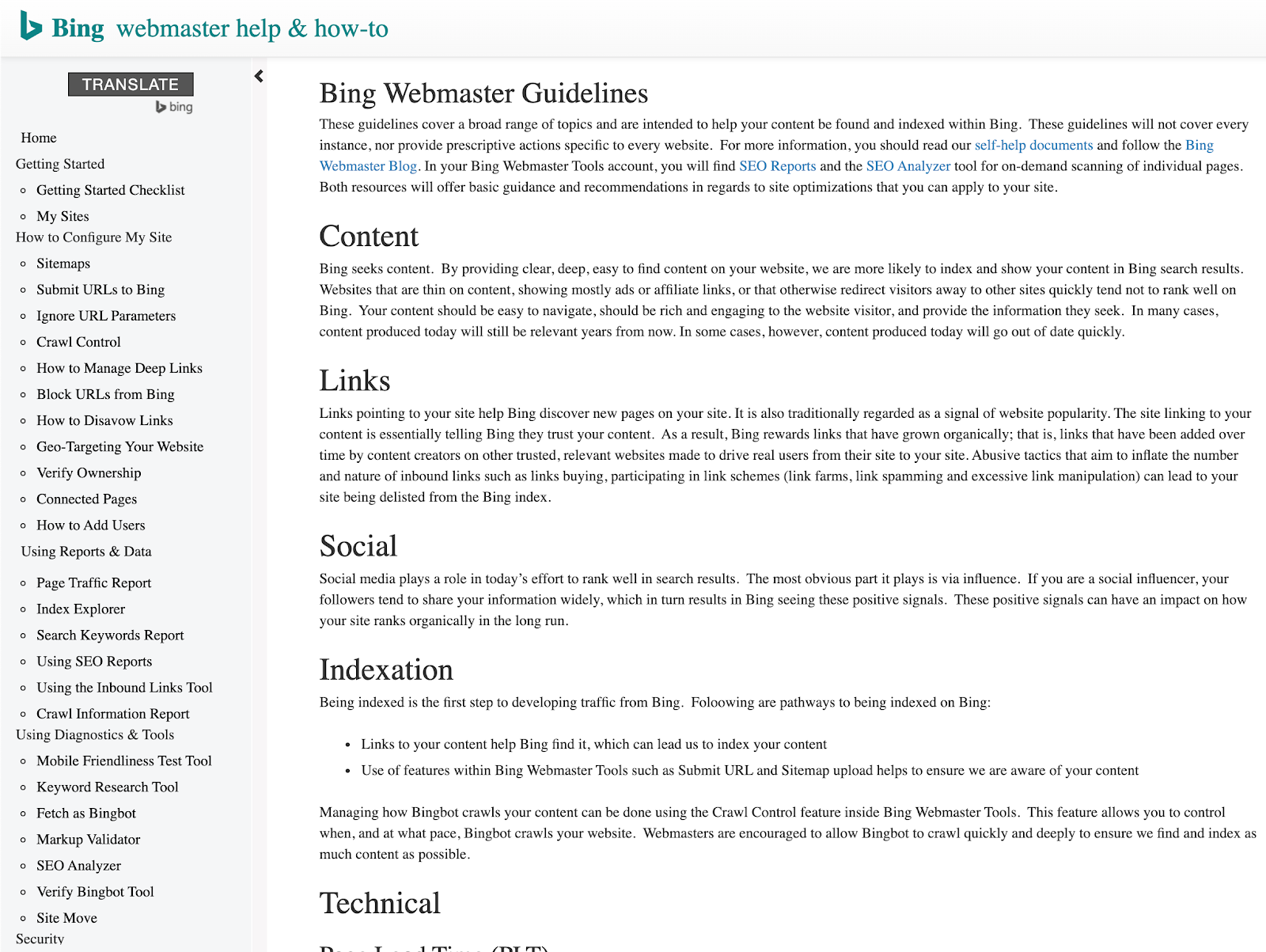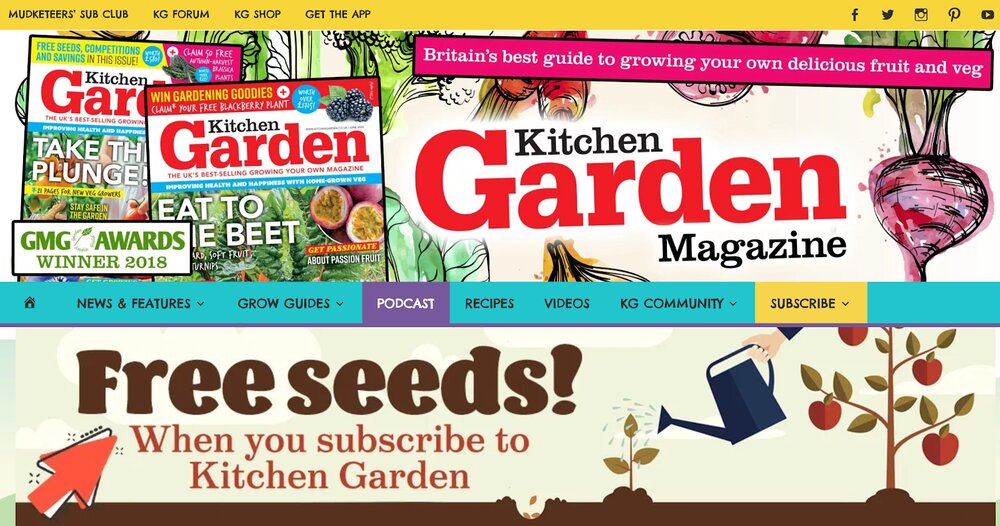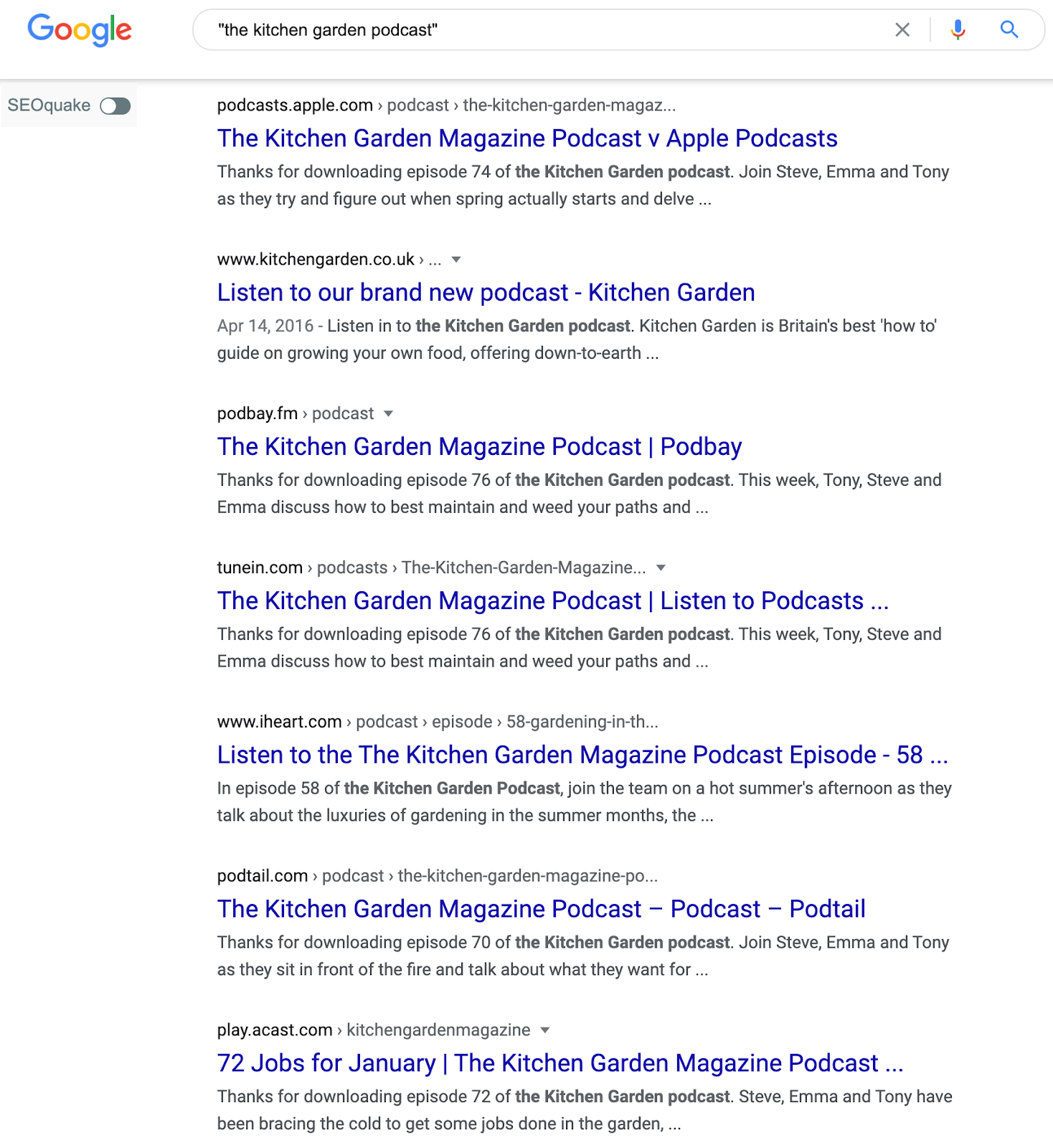Creating fantastic content that is likely to achieve the marketing results you want takes time & patience. To make the most of your investment in content marketing this year, don’t settle for getting one piece of content out of each topic idea brought to the table. In this post, you will learn how to turn one idea into multiple content marketing opportunities.
Focus your advice to one or more different audiences.
The first way to expand upon your original topic idea is to look for ways to target different audiences. In addition to helping you create new content ideas that can be distributed to new channels, you may get the chance to reach new customers by crafting content that speaks directly to them.
For example, let’s take the popular SEO topic — The Beginner’s Guide to SEO or SEO 101. This could be easily broken down into multiple verticals and niches such as:
- The Beginner’s Guide to SEO for eCommerce Stores
- The Beginner’s Guide to SEO for Law Firms
- The Beginner’s Guide to SEO for Chiropractors
- SEO 101 for Small Business Owners
- SEO 101 for Etsy Shops
- SEO 101 for WordPress Websites
As you can see, many agencies have taken this approach to attract customers in specific verticals.
You may be thinking that this sounds like an easy process for SEO and marketing blogs, but it can be easy for other businesses as well. Take, for example, a seed company. They can take a topic on How to Grow Lettuce and turn it into many ideas.
Their job is to base it on gardeners in different locations, gardeners with varying growing environments, and gardeners who start growing in specific seasons. For example:
- How to Grow Lettuce in Zone 1 – 12 (12 possible topics)
- How to Grow Lettuce in Small Spaces
- How to Grow Lettuce Indoors
- How to Grow Lettuce in the Heat
- How to Grow Lettuce in the Cold
Now, if you think about the fact that the seed company can expand these into multiple topics for all of the fruit and vegetable seeds, bulbs, and plants they sell, that is a massive library of content ideas from the start. You can see how home and garden sites like SFgate.com do something similar with their lettuce-growing tips.
Break main bullet points into individual pieces of content.
The next way to get multiple content marketing opportunities from your topic idea is to write an outline. The main bullet points of that outline – the ones that you may have turned into the main header points of a blog post or video – could be turned into individual pieces of content.
This usually works with broad original ideas. The Beginner’s Guide to SEO is a great example, as it will have a lot of concepts that need to be explained. Each of which could easily be turned into a detailed piece of content on its own. Those could include:
- The Beginner’s Guide to Competitor Research
- The Beginner’s Guide to On-Page Optimization
- The Beginner’s Guide to Off-Page Optimization
- The Beginner’s Guide to Keyword Research
- The Beginner’s Guide to Technical SEO
- The Beginner’s Guide to Link Building
Bing does something like this with their Webmaster Guidelines. They break their basics of SEO into individual, in-depth topic pages covering sitemaps to site moves.
If you are ready to expand and want to develop your topics into even more opportunities, you can take these more specific subtopics and focus them on particular audiences. Think about the four audiences for the SEO topics earlier – e-commerce stores, law firms, small business owners, and Etsy stores. If you multiply those with the above six topics, you now have 24 topic ideas!
For our seed company, a post on How to Grow Lettuce could be broken down into:
- How to Prepare Your Yard for Gardening
- How to Choose the Best Soil for Gardening
- How to Choose the Best Types of Lettuce
- How to Choose the Best Fertilizer
- How to Protect Your Lettuce from Pests
- How to Harvest Your Lettuce
You may not be able to split these into as many different audiences as noted earlier. But if you could aim them to even two different audiences, you would have 12 topics to work with.
Some content creators like to “test the waters” with broad topics first. If the broad topic performs well with their audience, they will create more detailed topics around the subheadings and bullet points later down the road.
This is an excellent approach for teams that want to try a couple of broad topics before diving into the multiple content opportunity approach.
Convert one format into multiple formats.
Does your business churn out tons of blog posts or videos? No matter what content format you start with, you can take your content marketing to the next level by broadening your horizons to new formats. Putting your message into different formats allow you to reach new audiences in a variety of ways.
For starters, not everyone likes to learn the same way. There are four different learning styles: visual, auditory, reading/writing, and kinesthetic (hands-on). Your content will only appeal to the reading learners if your business is only creating text-based blog content. Or if you only create videos, you’ll lose your readers.
If you create multiple types of content, you can offer them everything, like Kitchen Garden Magazine does, right on their website. They offer news, grow guides, podcasts, and videos.
Next, you have to consider convenience. People who commute for two hours a day in rush hour traffic aren’t going to be reading or watching videos. But they can consume audio content.
Additionally, people who work in noisy environments may not watch videos or listen to audio. Still, they may be able to consume your videos and podcasts if there is good captioning or a transcription accompanying your media.
Most importantly, you must consider the opportunities that come with multiple formatting web content, or the opportunities you are missing out on when you create content in other formats.
For example, if you only create videos, you won’t have the chance to submit content to other blogs as a guest contributor. If you only create blog posts, you won’t be able to provide your podcasts to multiple podcast networks.
Instead, let’s look at some of the content formats you can add to your content marketing mix.
- Text content: Blog posts, ebooks, checklists, presentations, newsletters, social media posts, forum posts
- Visual content: Infographics
- Audio content: Podcasts, audiobooks
- Video content: Webinars, live video
- Interactive content: Courses, microsites, wikis, certifications, worksheets, templates, tools, quiz, kits
Can you turn every topic idea into one of these formats? Quite possibly! It would be easy to do with a beginner’s guide to SEO, so we will skip that and go straight to the more niche topic for the seed company.
Let’s say that the seed company started with a blog post on how to grow Lettuce. If one blog post was expanded into an ebook & audiobook, presentation, infographic, podcast, video, webinar, course, and microsite – that’s a total of 10 pieces of content.
Now, let’s think about the fact that the seed company could create ten pieces of content for how to grow Lettuce indoors and how to grow Lettuce outdoors. That’s 20 pieces of content in total!
Suppose they created ten pieces of content about how to grow Lettuce in each of the 12 different gardening zones, that equals to an astonishing 120 pieces of content! As you can see, the potential for turning one topic into multiple opportunities can add up once you break the topic down by audience and different formats. This is a great strategy used by Code Web.
Distribute your content to as many channels as possible.
Now, it’s time to make your new content marketing strategy pay off. Once you start creating lots of content from your original topic idea, you will need to begin publishing and distributing it.
You will want to start by publishing a substantial piece on your own website. An article that can be counted as a “source” for all of your other posts.
Why? For the links, of course. You won’t be able to link back to the originating piece of content every time, but having a piece of content linking back to is going to be easier than linking back to a homepage or sales landing page in some instances.
From there, you will need to find the best distribution channels based on the type of content. Let’s go back to the SEO with their Beginner’s Guide to SEO and specific audiences’ advice. Each piece of content for a particular audience could be pitched to a relevant blog as a guest post.
- The Beginner’s Guide to SEO for e-commerce Stores – Pitch as a guest post to blogs on SEO and e-commerce.
- The Beginner’s Guide to SEO for Law Firms – Pitch as a guest post to legal marketing blogs.
- The Beginner’s Guide to SEO for Chiropractors – Pitch as a guest post to blogs on chiropractic marketing.
- SEO 101 for Small Business Owners – Pitch as a guest post to blogs for small business owners or small business marketing.
- SEO 101 for Etsy Shops – Pitch as a guest post to blogs on e-commerce or Etsy marketing.
- SEO 101 for WordPress Websites – Pitch as a guest post to blogs on WordPress or blog marketing.
Each of the above guest posts could result in a backlink to your original blog post or your website in general. Even if it is a nofollowed backlink, any link from a high-quality publication with engaged readers could result in traffic back to your site and potential clients for your business.
Next, consider the seed company that turned their blog post on How to Grow Lettuce into an ebook & audiobook, presentation, infographic, podcast, video, webinar, course, and microsite. Here are ways they might distribute each of these types of content.
- The ebook could be distributed on Amazon, Apple, Barnes & Noble, Google Play, and Kobo.
- The audiobook could be distributed on the above networks as well as ListenUp, Author’s Republic, and Findaway Voices.
- Presentations can be distributed on LinkedIn’s Slideshare and Scribd.
- Podcasts can be distributed on Apple iTunes, Google Play, Buzzsprout, Captivate, Stitcher, Simplecast, Transistor, Podbean, Castos, Spreaker, and other podcast hosting platforms.
- Infographics can be distributed on Flickr, Pinterest, Imgur, and similar image-based social networks.
- Videos and webinars can be distributed on YouTube, Vimeo, and Dailymotion.
- Courses can be distributed on networks like Udemy, Open Sesame, and Skillshare.
Now, you have over 20 platforms for potentially over 100 content topics. If you do the math, that is a lot of content. But it is also the potential to reach many new people with highly targeted content in a format that they want to consume, which means that your business’s message will reach them in the most beneficial way possible.
Here, you can see how one podcast appears in Google search results on several platforms and the original website.
This will allow the publisher to reach audiences, build authority, and potentially get links from each platform.
Rinse and repeat with data.
Now that you have expanded upon your original topic as much as you possibly can using different audiences, detailed breakdowns of your main bullet points, and as many different formats as you can produce – what’s next? Analysis.
After everything has been distributed and published, take a look at the data from your Google Analytics. Monitor the overall health of your website in search to see if your rankings are improving. Keep an eye on the originating piece(s) of content on your website. See if any particular distribution channels have led to traffic, leads, or sales.
For example, if you repurpose your content into courses, review the traffic from the different sites you publish your courses upon. If you have to pay for learning platforms that aren’t delivering traffic, conversions, or quality links, you can remove them from your marketing plan and improve your overall return on investment.
Once your analysis is done, you should understand how to proceed with future content marketing topic expansions. You may find that particular audiences, details, and content formats resonate well with your customers. Those will be areas you will want to focus your best content creation efforts towards the future to get your best ROI.

